A Better Life in the Heart of the South Pacific
by Xi Yuan
[Samoa] Keneti Levasa
At an agricultural exhibition in Samoa, the China booth offered visitors plates of tomatoes, pumpkins, lemons and even watermelons,a rarity for the locals.
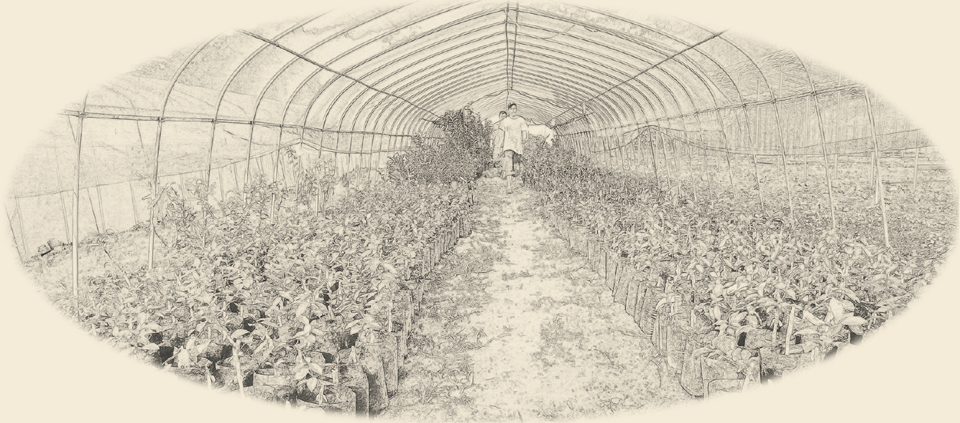
"What a big watermelon! I want to eat it!" a chubby little Samoan boy said. As he bit into the juicy slice given to him, the boy was ecstatic. "It's so sweet!" he exclaimed. "I like watermelons but mommy says they're too expensive."
The China-Samoa Agricultural Technical Aid Project was started in 2010 so that Samoans would have more fruits and vegetables at affordable prices. More importantly, the Chinese experts on the project worked to ensure that Samoan farmers would be able to grow their own vegetables and fruits and develop agriculture locally.
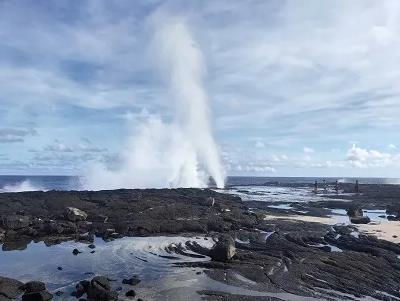
A breath-taking scene in Samoa
"We've Never Seen So Many Varieties of Vegetables Grown Here!"
Samoa, the "heart of the South Pacific", has a population of 201,000 and a land area of 2,934 square kilometers. The scenery ispicturesque and the climate pleasant. Samoa has a stable government and is a safe country to live in. It is the second Pacific island countryto establish diplomatic relations with China.
Agriculture is the pillar industry here, with 97 percent of families engaged in different forms of agricultural production. But Samoanagriculture was marred by outdated production methods which lowered the capacity. The country relies entirely on imports for rice, flour and sugar, and buys large quantities of meat, vegetables and fruits from other countries. The annual cost of food imports is a staggering USD100 million. More than 80 percent of Samoans are overweight and urgently need a change in their diet.
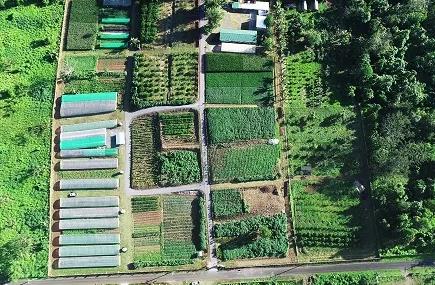
A bird's eye view of the China-Samoa Demonstration Farm
That said, Samoa still has great potential for agriculture, as 80 percent of the land remains uncultivated and the people are trying hard for a better life. Their strong need for advanced technology meant an opportunity for Chinese experts to apply their strength.
The 4-hectare China-Samoa Demonstration Farm, a signature program between the two countries for a decade, has grown into the largest and most complete farming base among all of China's assistance programs in South Pacific island countries.
Inside the farm, it is an impressive sight with rows of greenhouses, open-air vegetable plots, feed crops, eco-orchards, agricultural machinery processing, biogas tanks and training and storage sections. These are the main functional areas in the farm, supporting its roles as a seed base, a technology demonstration window, an agricultural training center, and a cooperation platform. Ten agricultural techniques are demonstrated here for promotion.
The beautiful Savai'i Island, Samoa's largest island, is sparsely populated. In the past, it lagged behind in agriculture. At the request of the Samoan Government, Chinese experts came to Savai'i and gave hands-on training to 25 farming households. The experts brought tractors with them, the first time that modern machinery was used in agriculture on the island. Under the guidance of the experts, the once low-yield fields on the island are today teeming with a variety of vegetables. The overwhelmed locals exclaim that they have never seen so many kinds of vegetables grown on the island before.
At the farm and the 25 households, Chinese agricultural expert Liu Guoping showed the Samoan farmers how to plan land use and upgrade field facilities. Liu didn't stand on ceremony. Like the farmers, he sat on the ground when it was time for a break, drank water from the tap, and ate yam with them. Under his leadership, the farm saw considerable improvement and many local farmers' fortunes improved. For his contribution, the locals fondly called Liu "Papa Liu".

Liu Guoping with local farmers
Seeing that watermelons were very expensive, Liu experimented with different varieties and developed ingenious greenhouses best suited for the tropical island. Then he chalked out a complete set of cultivation techniques for growing greenhouse watermelons in Samoa. It worked and the price of watermelons in Samoa dropped from WST20 (USD7.5) per kilogram in 2017 to WST7 (USD2.6). Today, because of Liu and his team, Samoa no longer needs to import watermelons.
But life is unpredictable. Liu contracted a sudden illness and, despite emergency medical treatment, died on the island while working for his favorite cause.
His funeral was held in a memorial cemetery on the outskirts of Apia, the capital of Samoa, on May 9, 2020. The locals came with flowers and cards to say farewell to the expert who had contributed so much to Samoa's welfare. The officials and workers with the agricultural program were moved to tears. Some of them kissed Liu's coffin and wept.
A farmer from a model household said with a heavy heart, "I think of him all the time. I had never known that growing vegetables could be so profitable until he came to help us. Now I can make more money, but he's gone. It's heartbreaking."
"Can You Get Me a Greenhouse?"
"Can you get me a greenhouse?" This is now the question the Chinese experts in Samoa are asked most.
It is difficult to have farmers try a novel agricultural technology. Providing free greenhouses to demonstration farming households is a key measure the Chinese team adopted to do so among local farmers.
Once they have a greenhouse, the farmers are provided with materials and technology so that they can improve their productivity and increase their income. It produces quick results and is sustainable in the long run.
Samoa has a long rainy season – almost six months a year. The frequent downpours and the scorching sun can play havoc with the vegetables. To prevent that, the Chinese team designed quality greenhouses based on the climate and local conditions. The greenhouses are rainproof and wind, insect and corrosion resistant.
During their field research over a year, the team experienced many difficulties – the rugged terrain, bad weather, hurricanes, and dengue fever – but none could hold them back. They handpicked 100 farming households and set up 120 high-standard greenhouses with supporting facilities. They provided 50 sets of machines to the farmers as well as seeds, seedlings and other farming tools. They also gave one-on-one training in the fields for more than 300 times.
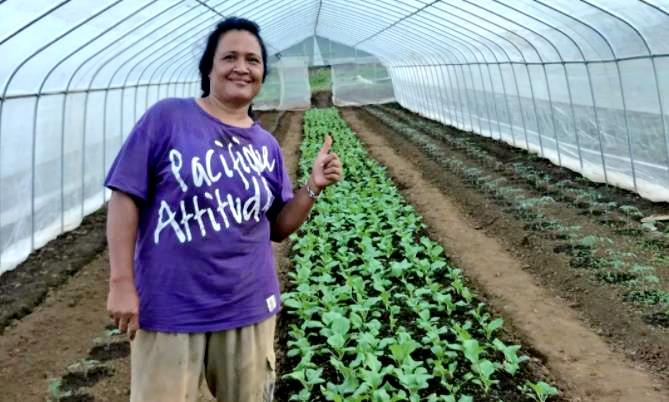
Sara gives a thumbs-up to Chinese greenhouses.
On September 6, 2018, the greenhouses were officially handed over to the Samoan Government in a ceremony attended by Samoa's Council of Deputies Member Le Mamea Ropati Mualia and Speaker of the Legislative Assembly Leaupepe Taimaaiono Toleafoa Faafisi. The Minister of Agriculture and Fisheries, Lopao'o Natanielu Mu'a, spoke highly of China's greenhouse technology.
Greenhouse technology is considered a key parameter in boosting vegetable production in Samoa. The Chinese greenhouses, which withstood the hurricane in 2018, are regarded as the best of their kind by the local farmers. Commercial farmers have imported 100 more greenhouses from China.
The hard work by the experts and the farmers has finally paid off. The model households have substantially increased their income by growing vegetables. Sara, who is from a model household, earned WST23,100 (USD9,240) more from vegetables in less than six months since she began using greenhouses, leaving her neighbors envious. Her success has given a powerful boost to the reputation of Chinese greenhouses.
The "greenhouse effect" goes beyond economic benefits. Samoa's agricultural experts say the measure has improved farmers' approval rating of government programs.
"Let's Get Some Training at the Chinese Farm"
John Maposua is a farmer in a mountain village. He used to grow yam on his 40-hectare land, but poor management and lack of technology resulted in pests and low yield.
To help him, the Chinese team set up two greenhouses with drip irrigation facilities, and ploughed the land with tractors. They also provided quality seeds and taught him advanced farming techniques. In 2018, Maposua earned more than WST100,000 (USD40,000), an unimaginable sum in the past, making him the cynosure of his neighbors.
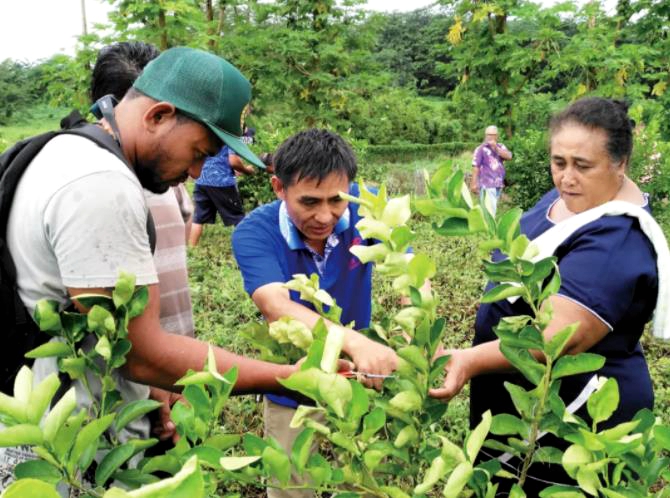
A training session in the field
He is grateful for the help given to him by the Chinese Government and experts, whom he regularly consults on his farming plans. When his work in the fields is done, he often visits the experts in their camp, taking them food and snacks. Today, he is a close friend of the Chinese team.

Samoa's pristine scenery
Maposua is one of the many Samoan farmers who have benefited from the agriculture cooperation program. To be trained at the demonstration farm has become a new trend among local farmers. Whenever they have any farming problem, the first thing they do is seek help from the Chinese experts.
And the experts have not let them down. They have worked out a feasible on-site modular training scheme at the demonstration farm. The modules are based on the farmers' needs and the farming seasons. Farmers are taught the essential theories so that they know the basics. For efficient training, the skills they require are broken down into step-by-step, hands-on teaching and practice.
Records show that Phase IV of the program alone provided agricultural training to 6,000 people, including farmers from model households, members of the Samoa farmers' association, farmers from nongovernmental organizations, technicians from the Samoa Ministry of Agriculture and Fisheries, and students. During the training, 4,500 copies of technical manuals and learning materials were distributed. The Samoan Government has requested a fifth phase of cooperation.
With their cooperation deepening, the two countries have seen growing agricultural exchanges. The Chinese experts are trying to bring more investment for Samoa's agricultural sector. A Chinese agricultural industrial park is being planned in Samoa. Samoa's specialty agro products will be processed and exported from the park, creating a new growth point for the economy.
Better things are still to come in the "heart of the South Pacific". The cooperation program has brought more than vegetables, fruits and growing incomes – it has resulted in better health and a quality life. The most important thing it has achieved is the brotherly friendship forged between the people of China and Samoa.
FOR MORE
Project Overview:
At the request of the Samoan Government, the Chinese Government initiated an agricultural cooperation program in Samoa, carried out by the Hunan Provincial Center for Agricultural Foreign Economic Cooperation. Four phases of the program have been completed so far. The program created model farming households, upgraded the demonstration farm and built agricultural infrastructure. It promoted crop varieties, agricultural machinery and skills training to increase the fruit and vegetable yield, especially vegetables, to reduce imports, ensure food security, and help farmers make more money.
The program has achieved notable results in increasing vegetable and fruit output, promoting agricultural technologies, developing circular agriculture, and training farmers and technicians. It has sponsored a comprehensive demonstration farm, nine agricultural stations, and 100 model households. Twenty-five experts from Hunan Province in south China have trained more than 10,000 Samoan farmers.


